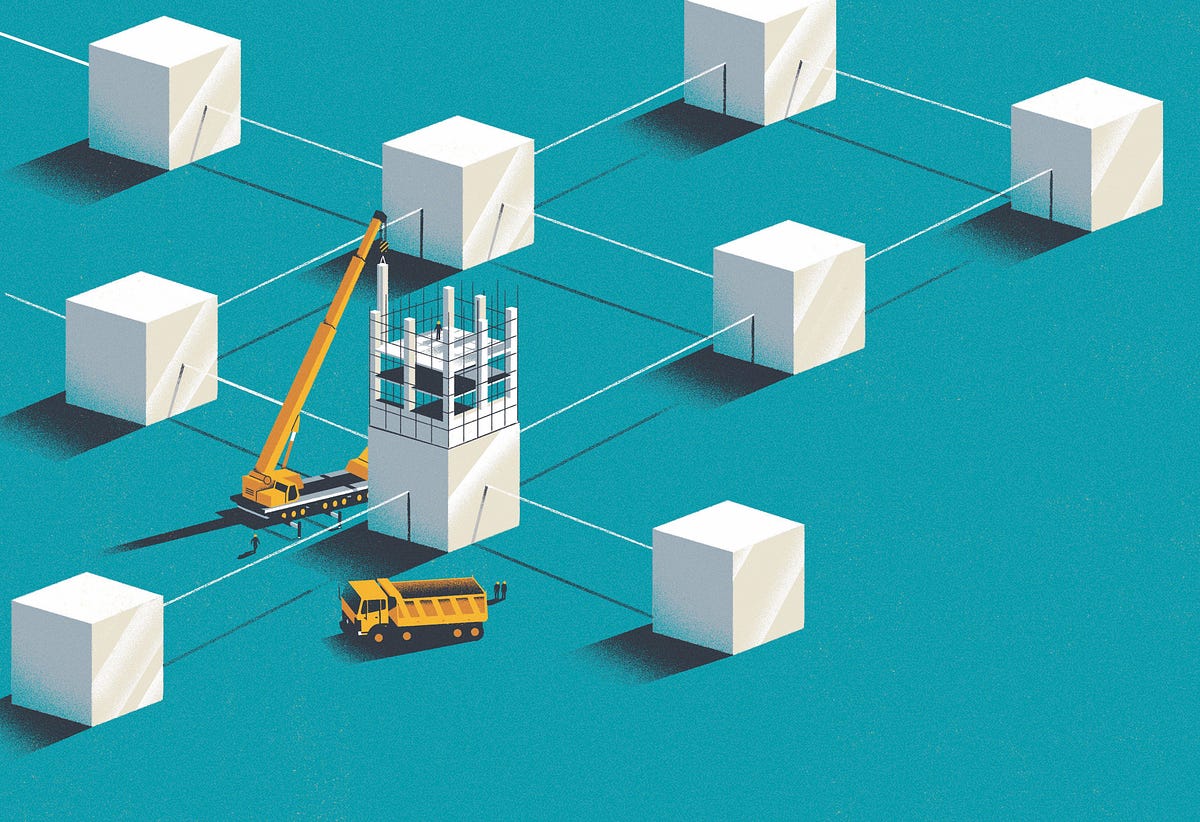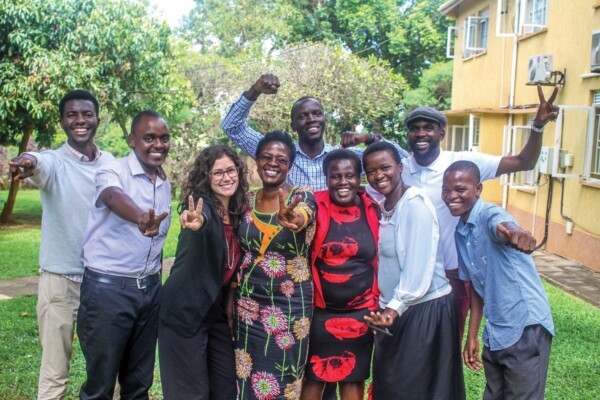Blockchain Innovation
McCombs takes a global role in research and development of groundbreaking new crypto-technology.
By Steve Brooks

When the doors to the conference hall swung open, it was the culmination of months of preparation by Meeta Kothare. “I was worried at the beginning that we wouldn’t be able to fill the hall,” says the McCombs adjunct management professor. “Then the registrations started pouring in.”
McCombs’ April 13 conference on blockchain, the database engine that runs cryptocurrencies like bitcoin, had sold out. At least 50 of the 300 seats were occupied by C-level executives.
It was all that Prabhudev Konana had hoped for. “We wanted to show that McCombs is on the leading edge of an emerging technology,” says the information management professor, who organized the event with Kothare and Associate Professor of Finance Cesare Fracassi. “The conference helped bring visibility to McCombs and to Austin.”
Within two months, it also brought something more tangible: a $2 million grant for an academic center, the Blockchain Initiative at Texas McCombs. Ripple, a San Francisco-based firm that uses the technology for international money transfers, picked the school as one of 17 worldwide to receive such funding.
Blockchain developers speak of it as an ecosystem, a web of players who collaborate to move the technology ahead. Over the past year, just such an ecosystem has emerged at McCombs.
It’s been expanding with remarkable speed. But then, few new technologies have ever raised so many hopes and questions so quickly.
Blockchain’s applications, boosters say, could transform large sectors of the business world, including financial transactions, supply chains, medical records and social improvement. Sensing opportunity, information technology giants like Microsoft and IBM have jumped into blockchain services.
But it’s also an immature field, full of potential landmines:
• Digital currencies have been dens for speculators and black marketeers.
• Agencies like the Securities and Exchange Commission threaten to regulate freewheeling cryptocurrency markets.
• Non-financial applications of blockchain have only worked at small scales. They might turn out to be costly and inefficient for Fortune 500 firms.
All of which makes this a perfect time for McCombs to get involved, says Fracassi, director of the Blockchain Initiative. “We’re in a unique position to help sort out what is real and what is hype.”
The First Links
Like the technology itself, the blockchain community at McCombs has grown in a decentralized fashion. Faculty, students, and alumni have come together gradually, as they’ve discovered common interests.
Each of the professors who spearheaded the April conference came to the topic from a different angle. Fracassi first researched it for a graduate class on financial technology, but he’s also intrigued by its uses for medical records.
“I come from Italy, I went to graduate school in Los Angeles, and now I’m in Austin,” Fracassi says. “My medical records are scattered among many different doctors’ offices and hospitals. If they were on a blockchain, I could have access to them all.”
Konana saw the technology as a way to streamline information management. “For a large global company, information systems are so fragmented,” he says. “Their systems don’t talk to each other. A blockchain has the potential to create one gigantic network that everyone can tap into.”
Helping the world’s poor was on the mind of Kothare, as director of the Social Innovation Initiative. From small farmers to refugees, more than a billion of the world’s people in poverty have no official ID. Putting their personal data on blockchains could help them get access to credit and to aid.
“McCombs’ new brand message is ‘Human Centered, Future Focused,’” Kothare says. “What could fulfill that more than helping vast numbers of people struggling to be in the mainstream economy?”
Students Get Attached
Meanwhile, students were staking their own claims on blockchain. Anthony Santaga, MBA ’19, had family members abroad. He envisioned transferring cash back and forth without going through a bank.
In fall 2017, he and a few other MBA students created the McCombs Graduate Blockchain Society. “It was perfect timing,” Santaga says, “because the prices of cryptocurrencies soon shot up a ridiculous amount.”
It helped that recruiters from J.P. Morgan and Goldman Sachs were asking students about their blockchain knowledge. By the end of the year, the MBA group counted 60 members.
Aside from putting out a weekly newsletter, the group brings in speakers. One presenter led Santaga to a part-time job with Unchained Capital, an Austin firm that takes cryptocurrencies as collateral for loans.
He says he notices many blockchain firms were founded by engineers and coders and need students with business savvy. Says Santaga, “It’s a great fit for McCombs, being a school that’s into technology entrepreneurship.”
Venturing into Blockchain
Although McCombs wasn’t teaching blockchain when he was a student, Randall Crowder, MBA ’10, credits the school with preparing him for his latest job: launching a cryptocurrency for Phunware, an Austin mobile app developer.
While in school, Crowder ran the Central Texas Angel Network and started his own venture capital fund. He has since invested in 54 companies, and one of the first was Phunware.
It was several years later when Crowder heard a rideshare driver talking about bitcoin that he had an “aha” moment. “When I see mainstream America talking about it, I know it’s reaching a tipping point,” he says.
Crowder opened an online community called Crypto Watch and later joined Phunware as chief operations officer. He calls himself the “chief crypto zealot.”
His PhunCoin will challenge Facebook and Google by giving companies a way to pay consumers for their personal data. Once someone’s information is on a blockchain, they can choose who is allowed to see it. “We’re using your data, but we want to compensate you for using it and give you control over what you share and when you share it,” Crowder says.
Making a Ripple
A more recent alumnus linked McCombs with Ripple, a company that uses blockchain technology to provide real-time international currency transfers. Marcos Fernandez, MBA ’16, met several blockchain startup leaders while co-founding a speaker series called TEX Talks. After graduation, as a product marketing manager at Ripple, he stayed in touch. When he heard his alma mater was planning a blockchain conference, he made sure the company had someone there.
He also introduced Fracassi to Eric van Miltenburg, Ripple’s senior vice president of global operations, who was overseeing $50 million in research grants to universities.
“Fernandez said we needed to talk to McCombs,” van Miltenburg says. “They were doing interesting things around blockchain.” By June, McCombs and 16 other institutions, including Wharton, Berkeley, and MIT, were named as recipients.
The $2 million grant has no strings attached, but the school will host a computer server for XRP, a cryptocurrency Ripple uses to speed payments across borders. Other servers in XRP’s network will help to validate transactions before adding them to the blockchain.
More broadly, says van Miltenburg, “We’d like to form a lasting relationship with McCombs and UT Austin. We hope to develop a positive reputation on campus that could lead to a recruiting pipeline.”
Next Blocks in the Chain
With the grant in place, Fracassi’s next step is to develop a three-part mission for the Blockchain Initiative: research, developing curriculum, and networking.
This fall, he began soliciting research proposals — not just from McCombs, but from other schools on the Forty Acres and local businesses as well.
“We hope to be a hub to connect people doing blockchain work across the UT Austin campus and the greater Austin community,” Fracassi says.
One thing the initiative will not be is an uncritical booster, says Konana, who is on its advisory board. Right now, investors are pouring money into startups. Many of them will fail. “But the more entrepreneurs get involved in resolving blockchain’s problems, the faster they will get resolved,” he says.
That’s precisely why a school like McCombs is needed, Konana adds. “The industry has taken off far faster than the academic work,” he says. “There are a lot of research issues we need to be worried about. I’m glad there’s so much excitement about them. I’m glad that McCombs can play a part.”
Blockchain Explained: Can a Ledger Change the World?
Behind the hoopla, a blockchain is simply a ledger for recording transactions. One block of data is linked to the block that came before it and the one that comes after, forming a chronological chain.
But it differs from traditional ledgers in several ways:
- It’s decentralized. Instead of one central organization, it’s maintained by a network of individual computers. Bitcoin, for example, is verified and added to the blockchain ledger by more than 5,000 contributors, known as miners.
- It’s hard to hack. Each contributor keeps their own copy of the entire chain and verifies new blocks of data. Altering any information would require hacking more than half the contributors.
- It’s historical. It displays every transaction since Day One and the time at which it occurred.
That feature makes it especially appealing for non-financial uses, like supply chains. When Walmart put all of its mango suppliers on a blockchain, it cut the time for tracing a slice back to the farm from six days to two seconds.
Instant traceability could also make food safer, says Cesare Fracassi, director of McCombs’ Blockchain Initiative. “If you find a banned pesticide on a head of lettuce, you can look at where it came from and check records of what was applied. When people are held accountable for what they do, they’re much more likely to play honestly.”
This article appeared in the fall 2018 issue of McCombs magazine. Click on the link to see the full issue.


